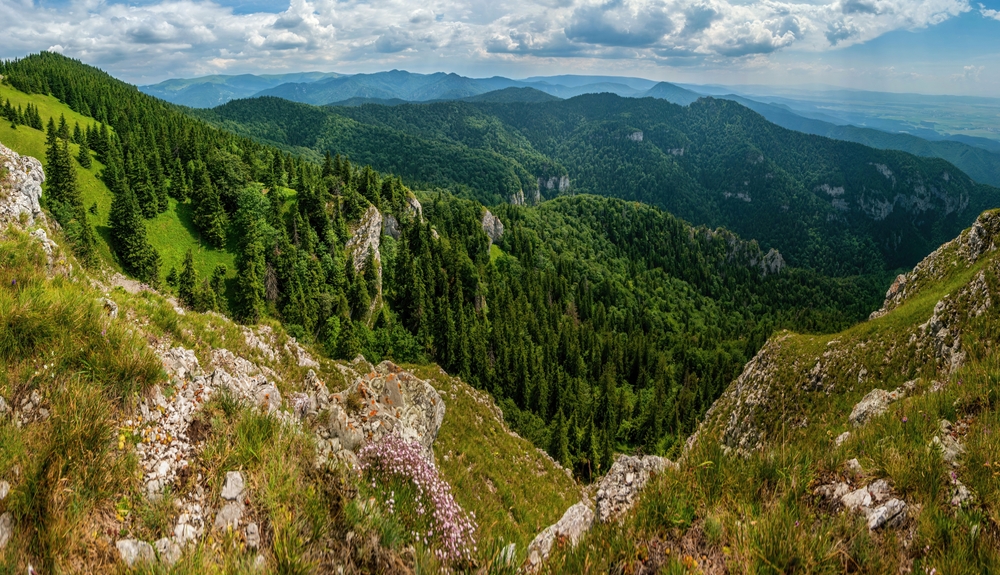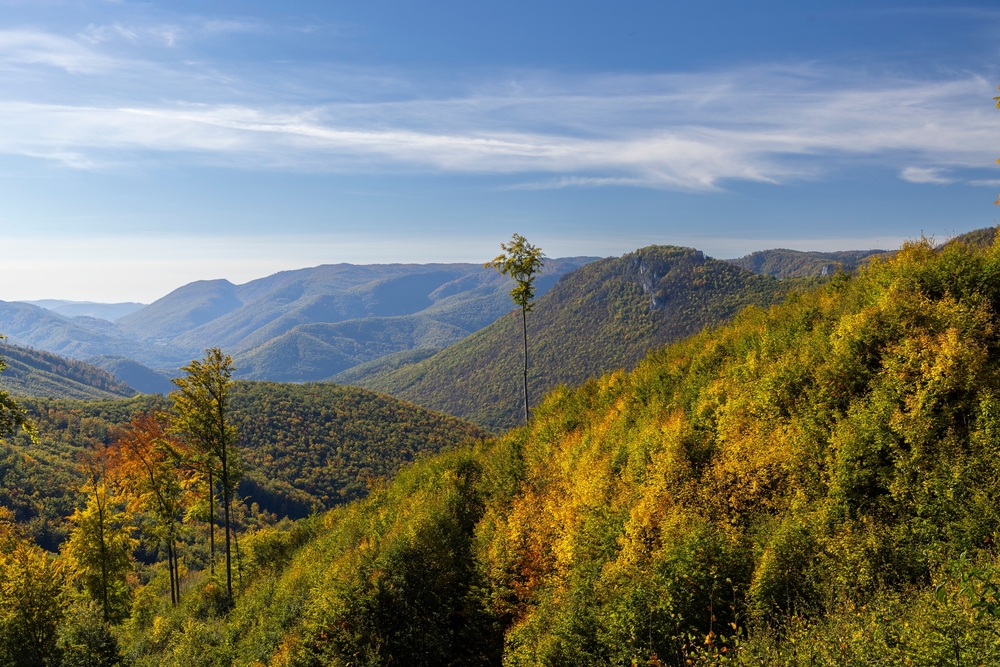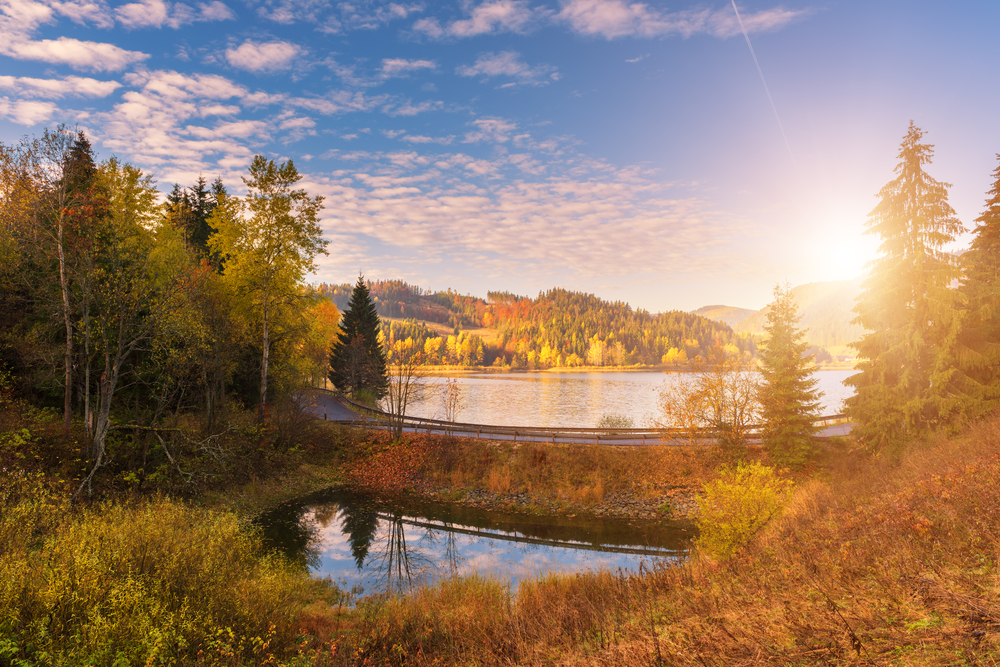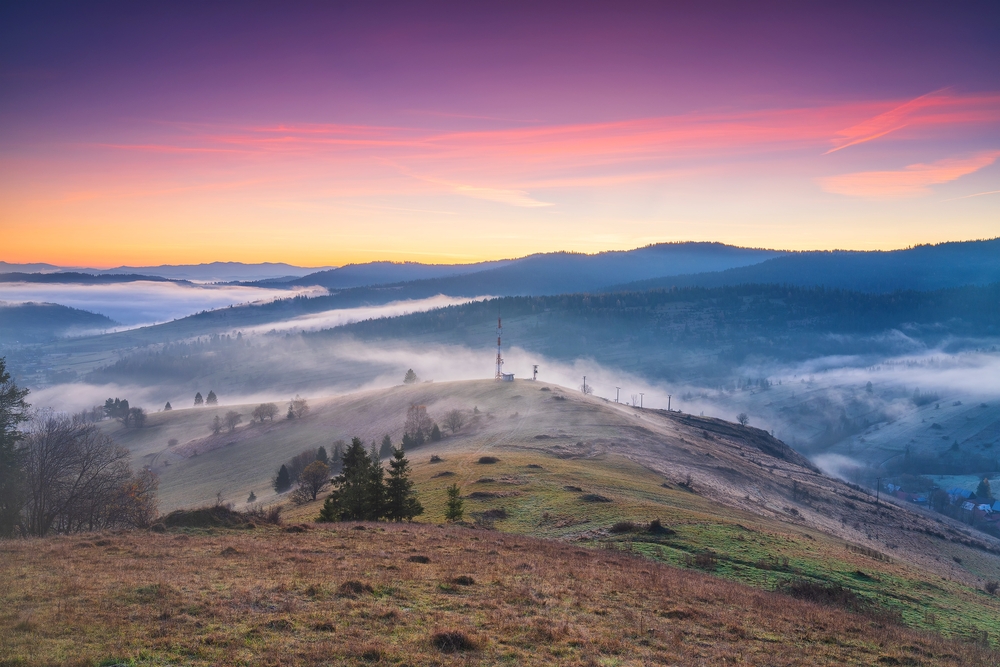Velka Fatra Overview
Veľká Fatra National Park, known in Slovak as Národný park Veľká Fatra, is a protected area in central Slovakia that spans approximately 162 square miles (419 square kilometers).
It is situated in the Žilina and Banská Bystrica regions, encompassing the Veľká Fatra mountain range, which serves as an extension of the Western Carpathians. The park was designated a national park in 2002, evolving from a protected landscape area established in 1973. It is recognized for its extensive forests, rugged limestone and dolomite formations, and a unique blend of high-altitude meadows and deep, narrow valleys.
The terrain of Veľká Fatra National Park is characterized by rolling ridges, steep cliffs, and dense primeval forests. Among its most prominent features are the peaks of Ostredok, the highest point at 5,085 feet (1,550 meters), and Krížna, a popular vantage point known for its panoramic views.
The park is home to numerous karst formations, including caves, sinkholes, and natural rock bridges. Deep valleys, such as Gaderská and Blatnická dolina, carve through the landscape, creating dramatic scenery and sheltering rare plant and animal species.
The park’s extensive beech, fir, and spruce forests make it one of the most forested national parks in Slovakia. In higher elevations, subalpine meadows known as “hole” provide vital grazing grounds for wildlife and support a range of flowering plants, including endemic species.
The wildlife in Veľká Fatra National Park is among the richest in Slovakia. The park is an important refuge for large carnivores such as the Eurasian brown bear, gray wolf, and Eurasian lynx, all of which thrive in its remote forests. The European wildcat, red deer, and roe deer are also commonly spotted in the area.
Birdwatchers may observe golden eagles soaring above the ridges, while black storks and peregrine falcons nest in the cliffs and rocky outcrops. The park’s dense forests also provide habitat for the rare Eurasian three-toed woodpecker, Ural owl, and western capercaillie, a large woodland grouse.
Several species of amphibians and reptiles inhabit the park, including the fire salamander, which thrives in the park’s cool, damp forests.
One of the most popular attractions in Veľká Fatra National Park is the Gader Valley, renowned for its picturesque rock formations and historical significance. Blatnica Castle, a medieval ruin perched on a hill above the valley, adds an element of cultural heritage to the park’s natural splendor.
The Harmanecká Cave, located on the park’s western edge, is another highlight, featuring impressive stalactites and stalagmites. Outdoor enthusiasts can explore an extensive network of hiking trails, with routes leading to scenic viewpoints, mountain huts, and hidden waterfalls. In winter, the park transforms into a haven for skiing and snowshoeing, with several resorts offering access to its slopes.
Visitors can experience the park through hiking, mountain biking, and wildlife observation, with guided tours available to enhance their understanding of the region’s natural and cultural history. The park’s rural setting also makes it a prime destination for traditional Slovak activities such as sheep farming and cheese making, which are still practiced in the mountain villages surrounding the park.
Conservation efforts in Veľká Fatra National Park focus on protecting its diverse ecosystems and mitigating human impact. Strict regulations are in place to preserve the park’s old-growth forests and rare wildlife, with efforts to limit logging and prevent habitat fragmentation.
Conservation programs have successfully maintained stable populations of large carnivores, ensuring that the park remains a stronghold for Slovakia’s native fauna. However, challenges such as climate change, illegal hunting, and increasing tourism pressure require ongoing management strategies to balance conservation with sustainable visitor access.


















































































